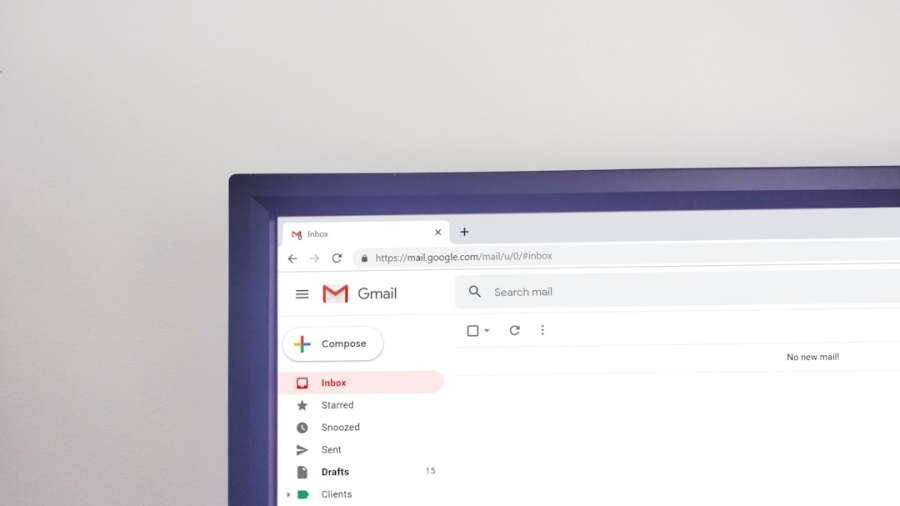Phishing scams have emerged as one of the most prevalent forms of cybercrime in the digital age, posing significant threats to individuals and organizations alike. These deceptive tactics are designed to trick unsuspecting victims into divulging sensitive information, such as passwords, credit card numbers, and personal identification details. The term “phishing” itself is a play on the word “fishing,” where cybercriminals cast a wide net to lure in potential victims, often using bait that appears legitimate.
As technology continues to evolve, so too do the methods employed by these malicious actors, making it increasingly challenging for individuals to discern genuine communications from fraudulent ones. The impact of phishing scams extends beyond mere financial loss; they can lead to identity theft, unauthorized access to accounts, and even significant reputational damage for businesses. In recent years, the sophistication of these scams has increased dramatically, with cybercriminals employing advanced techniques to bypass security measures and exploit human psychology.
As a result, awareness and education about phishing scams have become crucial components of cybersecurity strategies for both individuals and organizations. Understanding the various tactics used in phishing attacks is essential for developing effective defenses against this pervasive threat.
Key Takeaways
- Phishing scams are fraudulent attempts to obtain sensitive information such as usernames, passwords, and credit card details by disguising as a trustworthy entity in electronic communication.
- Sophisticated email phishing tactics involve personalized messages, spoofed sender addresses, and convincing replicas of legitimate websites to deceive recipients into disclosing sensitive information.
- Social media and messaging app phishing often involve fake profiles, malicious links, and deceptive messages to trick users into revealing personal and financial information.
- Phishing via fake websites and malicious links can lead to the installation of malware, ransomware, or the theft of sensitive information when users unknowingly click on fraudulent links or enter their credentials on fake websites.
- Mobile phishing attacks target smartphone users through text messages, app-based phishing, and fake notifications to trick them into providing sensitive information or downloading malicious apps.
Sophisticated Email Phishing Tactics
The Anatomy of a Phishing Email
Cybercriminals craft emails that closely resemble legitimate communications from trusted sources, such as banks, online retailers, or colleagues within an organization. These emails typically contain urgent messages that prompt recipients to take immediate action, such as clicking on a link or providing personal information.
The Psychology of Urgency
The sense of urgency is a psychological tactic designed to bypass critical thinking and encourage hasty decisions, making it easier for attackers to achieve their goals. Moreover, sophisticated email phishing tactics have evolved to include personalized elements that make the deception even more convincing.
Customization and Deception
Cybercriminals may gather information from social media profiles or previous interactions to tailor their messages specifically to the target. This level of customization can significantly increase the likelihood of success, as recipients are more inclined to trust communications that appear relevant to their lives. Additionally, attackers may employ techniques such as domain spoofing, where they use email addresses that closely resemble those of legitimate organizations, further blurring the lines between authenticity and deception.
Social Media and Messaging App Phishing

As social media platforms and messaging applications have gained immense popularity, they have also become fertile ground for phishing attacks. Cybercriminals exploit these channels to reach potential victims in a more casual and familiar environment. Phishing attempts on social media often take the form of direct messages or posts that encourage users to click on malicious links or provide personal information.
These messages may appear to come from friends or trusted contacts, making it difficult for users to recognize them as threats. In addition to direct messaging, attackers may create fake profiles that impersonate legitimate businesses or influencers. These profiles can be used to promote fraudulent offers or solicit sensitive information from unsuspecting users.
The informal nature of social media communication can lead individuals to let their guard down, increasing the risk of falling victim to these scams. As users become more aware of traditional email phishing tactics, cybercriminals are adapting by leveraging the unique characteristics of social media and messaging apps to execute their schemes effectively.
Phishing via Fake Websites and Malicious Links
One of the most insidious aspects of phishing scams is the use of fake websites designed to mimic legitimate ones. Cybercriminals often create replicas of popular sites, such as banking portals or e-commerce platforms, and direct victims to these sites through malicious links embedded in emails or messages. Once on the fraudulent site, victims may be prompted to enter sensitive information, believing they are interacting with a trusted entity.
This method not only compromises individual security but can also lead to widespread data breaches if multiple users fall victim to the same scam. Malicious links can also be disguised using URL shorteners or misleading text that obscures their true destination. For instance, a link may appear harmless at first glance but redirect users to a site controlled by attackers.
This tactic exploits users’ trust in familiar platforms and their tendency to overlook URL details when clicking links. To combat this threat, it is essential for individuals to remain vigilant and verify the authenticity of websites before entering any personal information. Simple practices such as checking for HTTPS in the URL or conducting independent searches for official sites can help mitigate the risks associated with phishing via fake websites.
Mobile Phishing Attacks
With the increasing reliance on smartphones for communication and online transactions, mobile phishing attacks have become a significant concern. Cybercriminals are now targeting mobile users through SMS messages, commonly known as “smishing.” These messages often contain urgent requests or enticing offers that prompt recipients to click on malicious links or provide personal information. The convenience of mobile devices makes it easier for attackers to reach individuals quickly and directly, increasing the likelihood of successful phishing attempts.
In addition to SMS-based attacks, mobile applications themselves can be exploited for phishing purposes. Attackers may create fake apps that mimic legitimate services or use push notifications to lure users into providing sensitive information. The rapid growth of app stores has made it challenging for users to discern between genuine applications and fraudulent ones.
As mobile phishing continues to evolve, it is crucial for users to exercise caution when downloading apps and responding to unsolicited messages on their devices.
Voice Phishing (Vishing) on the Rise

Voice phishing, commonly referred to as vishing, is another alarming trend in the realm of phishing scams. This method involves cybercriminals using phone calls or voice messages to deceive victims into revealing sensitive information. Vishing attacks often employ tactics such as caller ID spoofing, where attackers manipulate their phone numbers to appear as though they are calling from legitimate organizations, such as banks or government agencies.
This creates a false sense of security for victims who may be more inclined to trust a call from what appears to be a reputable source. The rise of vishing can be attributed in part to advancements in technology that allow attackers to easily mask their identities and create convincing narratives during phone conversations. Scammers may pose as customer service representatives or technical support agents, using scripted dialogues designed to elicit personal information from unsuspecting individuals.
The human element involved in voice communication can make vishing particularly effective, as victims may feel pressured or intimidated into complying with requests for sensitive data. As this form of phishing continues to gain traction, it is essential for individuals to remain cautious when receiving unsolicited calls and verify the legitimacy of any requests for personal information.
Targeted Phishing Attacks on Businesses and Organizations
Phishing attacks are not limited to individual victims; businesses and organizations are increasingly becoming prime targets for cybercriminals seeking larger payouts or valuable data. These targeted attacks, often referred to as spear phishing, involve extensive research on specific individuals within an organization, allowing attackers to craft highly personalized messages that appear credible and relevant. By exploiting insider knowledge about company operations or employee roles, cybercriminals can manipulate their targets into divulging sensitive information or granting access to secure systems.
The consequences of successful spear phishing attacks can be devastating for organizations, leading not only to financial losses but also reputational damage and legal ramifications. Cybercriminals may gain access to confidential data, intellectual property, or even financial accounts through these targeted efforts. As businesses increasingly rely on digital communication and remote work environments, the need for robust cybersecurity measures has never been more critical.
Implementing comprehensive training programs that educate employees about recognizing phishing attempts and establishing clear protocols for reporting suspicious communications can significantly reduce the risk of falling victim to these sophisticated attacks.
Tips for Recognizing and Avoiding Phishing Scams
Recognizing and avoiding phishing scams requires a combination of vigilance, skepticism, and proactive measures. One of the most effective strategies is to scrutinize any unsolicited communication carefully. Look for signs of urgency or pressure tactics that may indicate a scam; legitimate organizations typically do not rush customers into making decisions without proper verification.
Additionally, pay attention to spelling errors or unusual language in emails or messages—these can be red flags signaling a phishing attempt. Another crucial tip is to verify the authenticity of any requests for personal information by contacting the organization directly through official channels rather than responding directly to suspicious messages. This simple step can help prevent falling victim to scams that rely on impersonation tactics.
Furthermore, utilizing security features such as two-factor authentication can add an extra layer of protection against unauthorized access. By staying informed about the latest phishing tactics and adopting best practices for online security, individuals and organizations can significantly reduce their vulnerability to these pervasive threats in today’s digital landscape.
If you’re concerned about phishing scams in 2024, it’s also crucial to stay informed about the latest technology that could be targeted by scammers. For instance, new smartphone releases often attract phishing attempts as scammers try to exploit consumer excitement and lack of information. A relevant article to consider is an in-depth review of the iPhone 14 Pro, which discusses its features and potential security enhancements. Staying updated with such information can help you recognize and avoid scams related to new tech products. You can read more about the iPhone 14 Pro and its features here.
FAQs
What is a phishing scam?
A phishing scam is a type of cyber attack where scammers impersonate legitimate organizations or individuals to trick people into providing sensitive information such as usernames, passwords, and credit card details.
How do phishing scams work?
Phishing scams typically involve sending fraudulent emails, text messages, or phone calls that appear to be from a trusted source. These messages often contain links to fake websites or malicious attachments designed to steal personal information.
What are some common signs of a phishing scam?
Common signs of a phishing scam include spelling and grammar errors in the message, requests for sensitive information, urgent or threatening language, and suspicious email addresses or URLs.
How can I protect myself from phishing scams?
To protect yourself from phishing scams, it’s important to be cautious of unsolicited messages, verify the legitimacy of requests for personal information, and use security software to help detect and prevent phishing attacks.
What are some examples of phishing scams to watch out for in 2024?
Examples of phishing scams to watch out for in 2024 may include fake vaccine passport requests, fraudulent cryptocurrency investment opportunities, and deceptive messages related to current events or popular trends.

